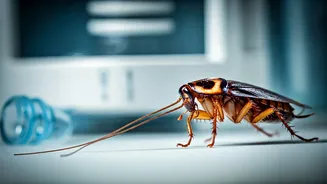Old Advice Revisited
The conventional wisdom for many years was to delay introducing allergenic foods, including peanuts, to infants and young children. This was done in the
belief that avoidance would prevent the development of allergies. Medical professionals advised parents to keep peanuts and peanut products away from infants and young children, especially if there was a family history of allergies. The primary aim was to protect the child's immune system, which was believed to be vulnerable at a young age. This approach, which included delaying the introduction of other common allergens like eggs and soy, was widely accepted for several decades. It was thought that by minimizing exposure to potentially allergenic foods, children would be less likely to develop allergies.
The Paradigm Shift
Recent research has dramatically changed the understanding of peanut allergies and their prevention. A pivotal study, notably the Learning Early About Peanut Allergy (LEAP) study, revealed that early introduction of peanuts could significantly reduce the risk of developing a peanut allergy. The study, which involved infants at high risk of developing peanut allergies, showed that those who consumed peanut products regularly in their first year of life had a much lower incidence of peanut allergy by age 5. These findings directly challenged the old advice and spurred a change in recommendations from leading medical organizations. This shift was a significant moment in the allergy prevention field, and it has since influenced guidelines for parents and healthcare providers worldwide.
Early Exposure Benefits
The LEAP study and subsequent research have consistently shown that early exposure to peanuts can offer several benefits. First and foremost, the early introduction of peanuts helps in desensitization. This means that the immune system learns to recognize peanuts as harmless, rather than triggering an allergic reaction. This desensitization process is most effective when initiated during infancy. Furthermore, early exposure can lead to the development of oral tolerance. When peanuts are introduced early and regularly, the body gradually becomes accustomed to them. This can create a protective effect, making it less likely that a child will develop a peanut allergy later. The benefits are significant; they show the potential for early intervention to prevent a lifelong condition.
New Guidelines Explained
Following the groundbreaking findings, medical organizations have updated their guidelines on introducing peanuts to infants. The new guidelines recommend introducing peanuts to infants, usually starting around 4 to 6 months of age, depending on individual risk factors. The American Academy of Pediatrics (AAP) and the National Institute of Allergy and Infectious Diseases (NIAID) have published detailed guidelines. These guidelines emphasize the importance of assessing a child's risk of allergy before introducing peanuts. Infants with severe eczema, egg allergy, or both, should be evaluated by a healthcare professional before peanut introduction. For low-risk infants, parents can begin introducing peanut products at home. The guidelines also provide guidance on how to introduce peanuts safely, suggesting starting with small amounts and monitoring for any allergic reactions.
Safe Peanut Introduction
Introducing peanuts to an infant should be done with care and caution. It's recommended to begin with small amounts, such as a teaspoon of smooth peanut butter mixed with breast milk or formula. Alternatively, parents can use peanut puffs or peanut flour, ensuring that the texture is appropriate for the infant's age and ability to swallow. The first dose should ideally be given at home, so that any reactions can be monitored. It is also important to introduce peanuts during the day to be able to detect allergic reactions. Signs of an allergic reaction include hives, swelling, vomiting, or difficulty breathing. If any of these symptoms appear, parents should immediately seek medical attention. It's important to introduce peanuts consistently, typically 2-3 times per week, to maintain tolerance.
Why the Change?
The shift in advice on peanut introduction happened because research revealed the limitations of avoidance strategies. The earlier guidelines, which focused on delaying exposure, didn't achieve the expected results, as peanut allergies continued to rise. The increase in peanut allergies, despite avoidance measures, prompted scientists to question existing protocols. The LEAP study, with its compelling results, offered a viable alternative. It became evident that the immune system needed early exposure to develop tolerance. The evidence demonstrated that the 'wait and see' approach was not as effective as the proactive introduction of peanuts. The focus shifted from avoiding to incorporating, fundamentally altering the way peanut allergies are viewed and managed.
Implications and Future
The implications of this shift are far-reaching. The new understanding of peanut allergy prevention offers hope for reducing the incidence of allergies. The early introduction approach has the potential to spare countless children from a lifelong condition. The change in medical advice also influences how parents and healthcare providers approach infant nutrition and allergy prevention. Research in this area continues, with scientists investigating the best methods and timing for introducing peanuts. The goal is to refine these guidelines and improve outcomes. The evolving understanding of peanut allergy prevention highlights the importance of evidence-based medicine and the need to adapt medical advice as new findings emerge.








